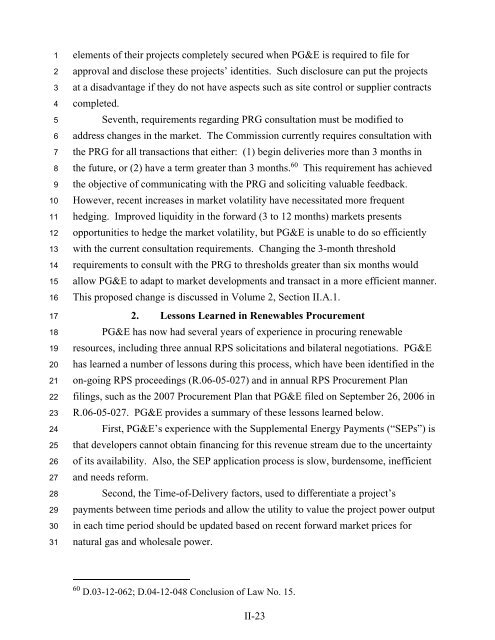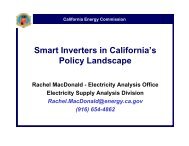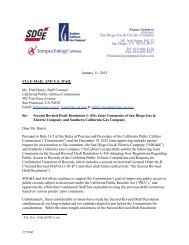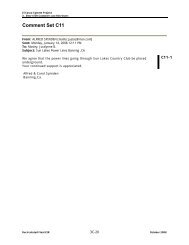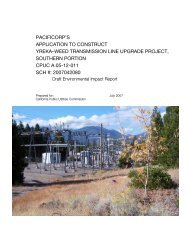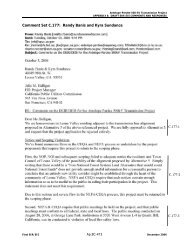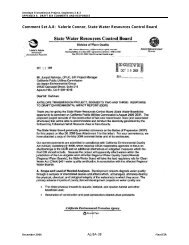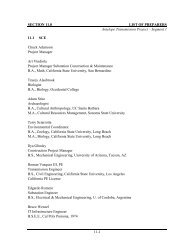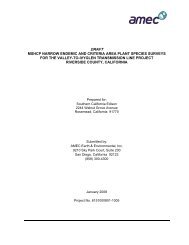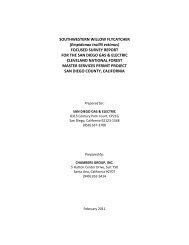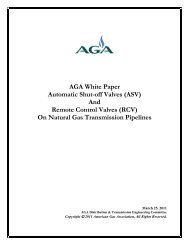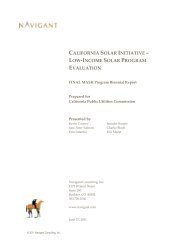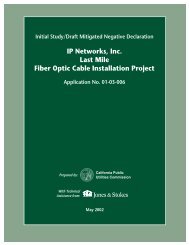Volume I. Part I - California Public Utilities Commission
Volume I. Part I - California Public Utilities Commission
Volume I. Part I - California Public Utilities Commission
Create successful ePaper yourself
Turn your PDF publications into a flip-book with our unique Google optimized e-Paper software.
1<br />
2<br />
3<br />
4<br />
5<br />
6<br />
7<br />
8<br />
9<br />
10<br />
11<br />
12<br />
13<br />
14<br />
15<br />
16<br />
17<br />
18<br />
19<br />
20<br />
21<br />
22<br />
23<br />
24<br />
25<br />
26<br />
27<br />
28<br />
29<br />
30<br />
31<br />
elements of their projects completely secured when PG&E is required to file for<br />
approval and disclose these projects’ identities. Such disclosure can put the projects<br />
at a disadvantage if they do not have aspects such as site control or supplier contracts<br />
completed.<br />
Seventh, requirements regarding PRG consultation must be modified to<br />
address changes in the market. The <strong>Commission</strong> currently requires consultation with<br />
the PRG for all transactions that either: (1) begin deliveries more than 3 months in<br />
the future, or (2) have a term greater than 3 months. 60 This requirement has achieved<br />
the objective of communicating with the PRG and soliciting valuable feedback.<br />
However, recent increases in market volatility have necessitated more frequent<br />
hedging. Improved liquidity in the forward (3 to 12 months) markets presents<br />
opportunities to hedge the market volatility, but PG&E is unable to do so efficiently<br />
with the current consultation requirements. Changing the 3-month threshold<br />
requirements to consult with the PRG to thresholds greater than six months would<br />
allow PG&E to adapt to market developments and transact in a more efficient manner.<br />
This proposed change is discussed in <strong>Volume</strong> 2, Section II.A.1.<br />
2. Lessons Learned in Renewables Procurement<br />
PG&E has now had several years of experience in procuring renewable<br />
resources, including three annual RPS solicitations and bilateral negotiations. PG&E<br />
has learned a number of lessons during this process, which have been identified in the<br />
on-going RPS proceedings (R.06-05-027) and in annual RPS Procurement Plan<br />
filings, such as the 2007 Procurement Plan that PG&E filed on September 26, 2006 in<br />
R.06-05-027. PG&E provides a summary of these lessons learned below.<br />
First, PG&E’s experience with the Supplemental Energy Payments (“SEPs”) is<br />
that developers cannot obtain financing for this revenue stream due to the uncertainty<br />
of its availability. Also, the SEP application process is slow, burdensome, inefficient<br />
and needs reform.<br />
Second, the Time-of-Delivery factors, used to differentiate a project’s<br />
payments between time periods and allow the utility to value the project power output<br />
in each time period should be updated based on recent forward market prices for<br />
natural gas and wholesale power.<br />
60 D.03-12-062; D.04-12-048 Conclusion of Law No. 15.<br />
II-23


